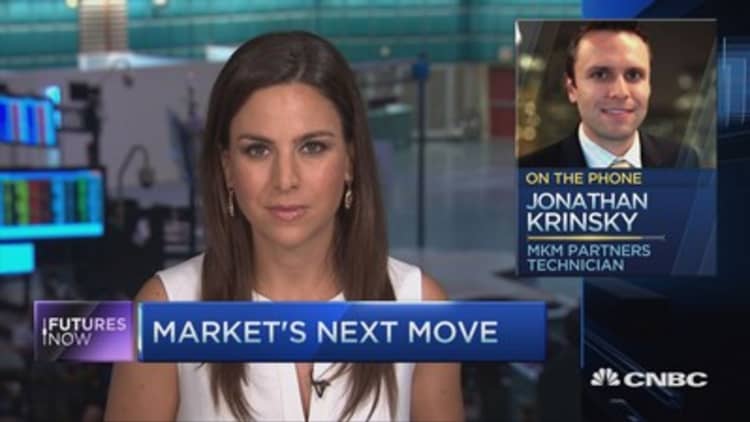
Stocks have been sputtering in and out of positive territory this week as investors try to make sense of recent selloffs. While much of the focus has been on the U.S. indexes, one technician is looking overseas for clarity.
"The most interesting action in the market right now is what's happening in the yen," Jonathan Krinsky said Thursday on CNBC's "Futures Now."
The dollar/yen rallied 5 percent in the first six months of the year, hitting a high in early June. But it's what's happened since then that has Krinsky concerned.
"It briefly traded above this area that it was trading at in 2006 and 2007 and then quickly reversed," said Krinsky, chief market technician at MKM Partners. "That gave us a bit of a long-term false breakout, and now we are trading under the 200-day moving average, which has served as support over the past few years and is now acting as resistance."
Read MoreRisk of big stock drops grows: Robert Shiller
For Krinsky, that weakness could spill over into U.S. equities. "There's a very high correlation between dollar/yen and the S&P 500," he said. Krinsky noted that the 50-day correlation between the currency and stocks is 81 percent, meaning "a big move down in dollar/yen would have negative implications for equities."
Krinsky, who correctly called the pullback two week's ago, said that while stocks have been trying to find balance from the initial "shock to the downside," he ultimately expects the S&P 500 to retest and break its recent low.
"If you look at the intraday action, we're seeing rallies around lighter volume, and as selling picks up we're seeing an increase in volume to the downside," he said. "I think if we get a rally up to the S&P 500's 20-day moving average around 2,014, that would be a good place to sell," he continued. "Pay attention to the low around 1,860 we saw last week."




